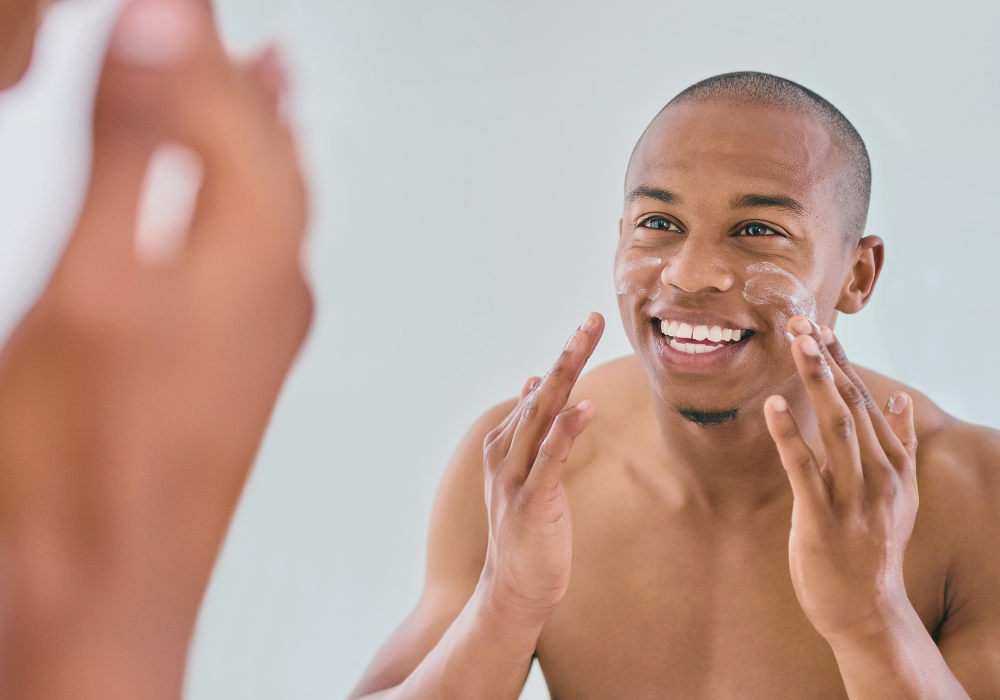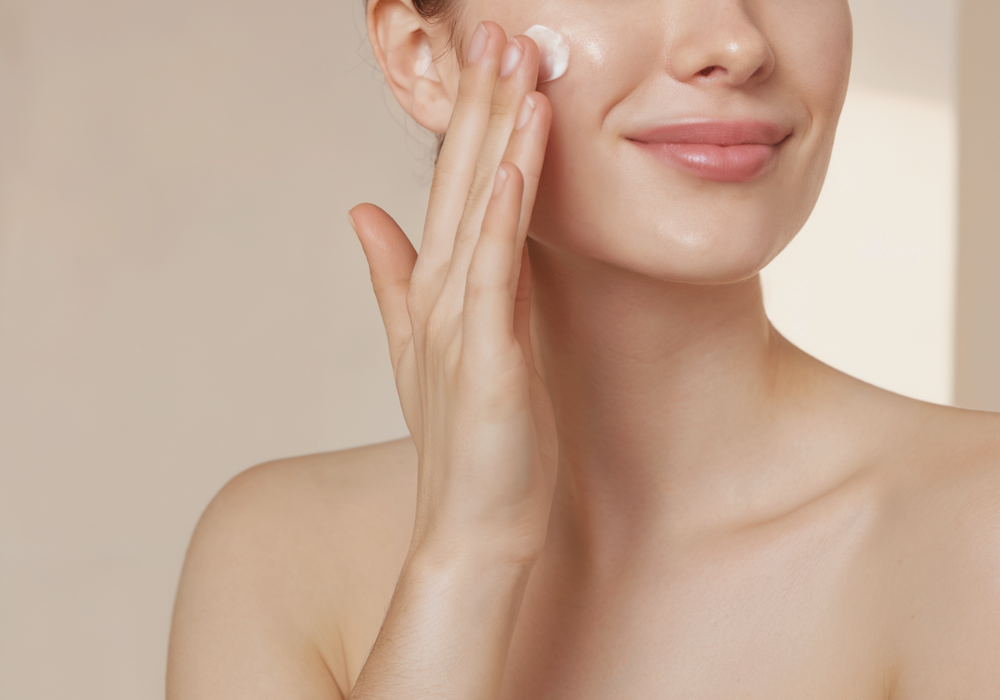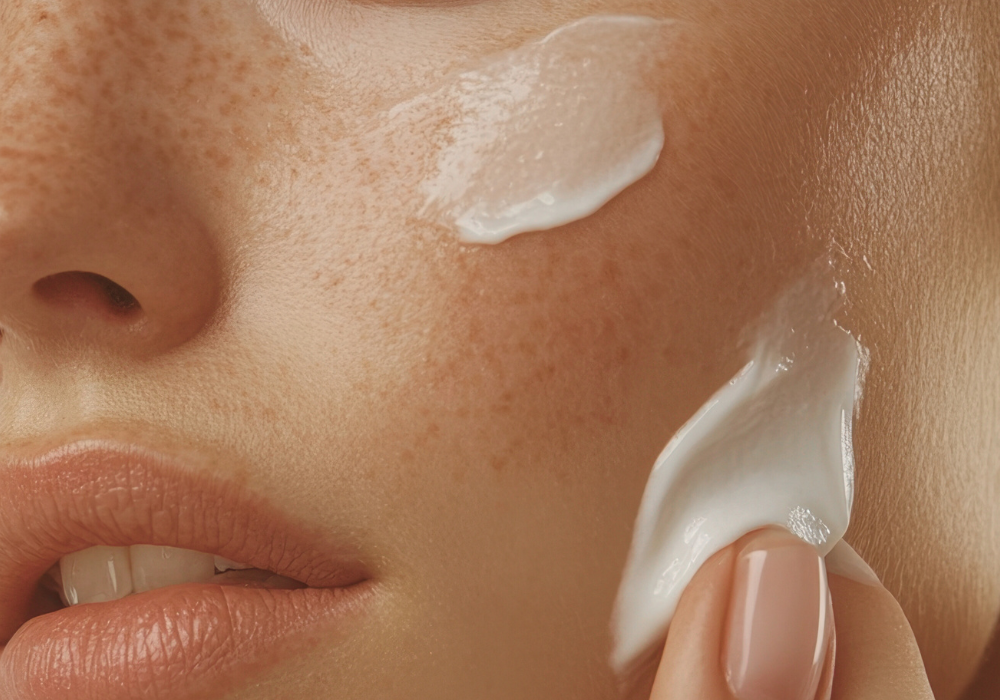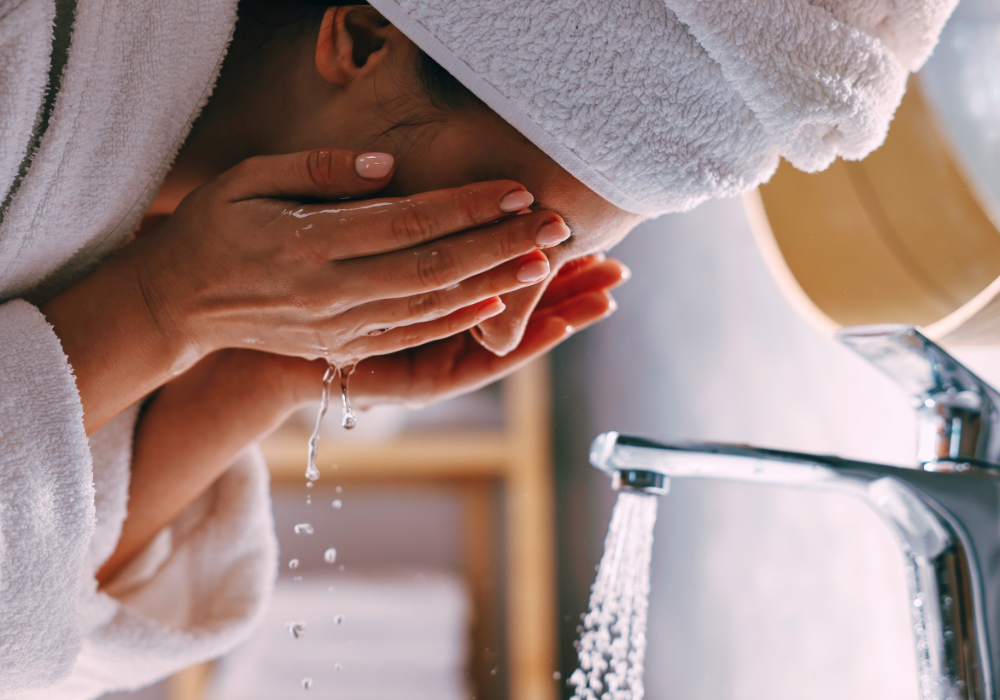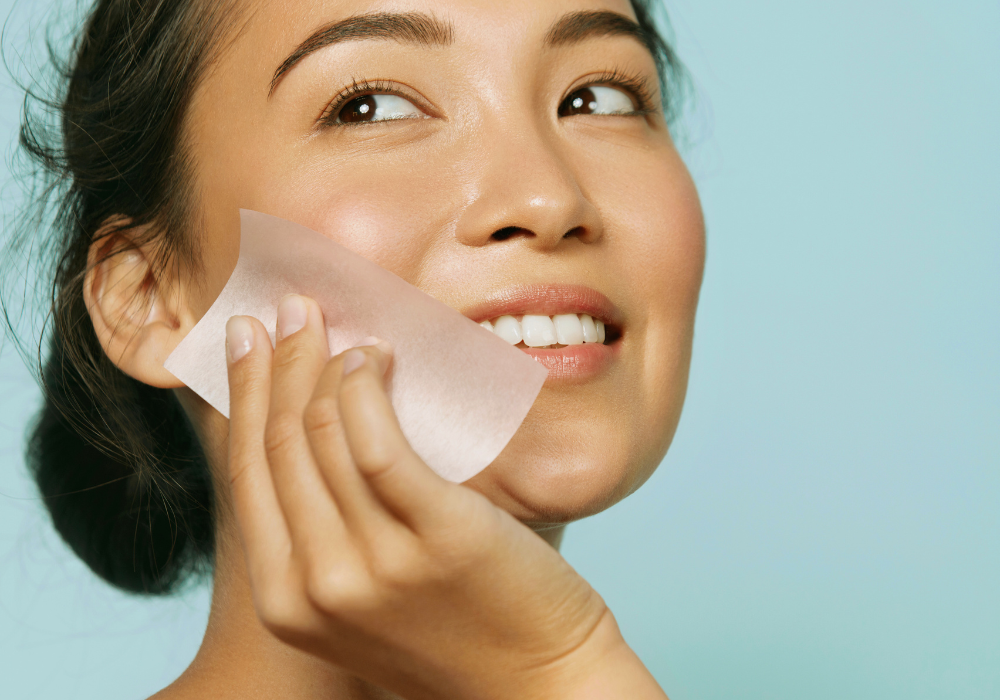Comprehensive data compiled from clinical research on male skin physiology, hydration mechanisms, and science-backed skincare approaches
Key Takeaways
-
Structural differences demand different approaches - Male facial skin is generally thicker and men typically have higher sebum secretion than women, especially in younger adults, requiring hydration products formulated specifically for male skin physiology rather than gender-neutral alternatives.
-
Topical hydration outperforms water intake alone - Clinical studies demonstrate topical moisturizers reliably improve skin surface hydration while increased water intake produces modest effects in already well-hydrated individuals, making science-backed products like the Exfoliating Daily Cleanser essential for maintaining optimal moisture levels.
-
Skin microbiome responds to hydration levels - Proper hydration correlates with balanced skin microbiome composition, with facial moisture levels explaining up to 20.72% of bacterial variance on the forehead, directly impacting skin health and reducing common issues like breakouts.
-
Exfoliation amplifies hydration absorption - Dead cell buildup on the stratum corneum blocks penetration of hydration products, making gentle exfoliation through hydroxy acids critical for maximizing the effectiveness of moisture-delivering ingredients.
-
Consistency drives measurable outcomes - Men who maintain proper skin hydration through consistent application experience visible improvements in skin texture and overall appearance, with results typically appearing within 4-6 weeks of consistent hydration practices.
Why Skin Hydration Matters More for Men
1. Male facial skin is generally thicker with higher sebum secretion than female skin
Male facial skin is generally thicker and men typically have higher sebum secretion than women, especially in younger adults. These structural differences affect how hydration products penetrate skin layers and how moisture moves through the epidermis to reach the surface. The thicker dermal structure requires formulations specifically engineered to deliver hydrating ingredients like hyaluronic acid through deeper skin layers rather than surface-level moisture that evaporates quickly. Understanding this structural difference explains why generic skincare approaches often underperform for men compared to science-backed formulations accounting for male skin architecture. Source: National Institutes of Health
2. Male sebum production remains elevated compared to females across age groups
Hormonal differences drive male sebum production to levels higher than female skin, with elevated oil production remaining consistent from adolescence through adulthood, though both parameters vary by site and decrease with age. While higher sebum levels contribute to superior early hydration measurements men experience, this same characteristic creates unique challenges for hydration product selection and application. Excessive sebum without proper hydration balance can lead to oily surface appearance masking underlying dehydration, a condition requiring lightweight, non-comedogenic hydrators that don't add surface greasiness. The relationship between sebum and hydration proves more complex than simple oil-versus-moisture dynamics, demanding products that work with men's natural physiology rather than against it. Source: National Institutes of Health
How Dehydrated Skin Accelerates Visible Aging
3. Men's skin hydration progressively decreases starting around middle age
While women's stratum corneum hydration remains relatively stable throughout their lifetime, men experience progressive hydration decline beginning in middle age that continues accelerating with advancing years. This gender-specific aging pattern explains why men who neglect hydration often experience rapid visible aging compared to female peers maintaining consistent moisture levels. The decline correlates directly with reduced skin barrier function, increased transepidermal water loss, and diminished capacity to retain moisture from environmental sources or topical applications. Without intervention through targeted hydration products, this progressive dehydration creates compounding effects on skin texture, elasticity, and overall appearance that become increasingly difficult to reverse in later decades. Source: International Journal of Cosmetic Science
4. Facial wrinkle depth measures significantly deeper in men compared to women
Clinical measurements demonstrate facial wrinkles in men, particularly around the lower eyelid area, reach significantly greater depth than comparable wrinkles in women of identical chronological age. This increased wrinkle severity stems from multiple factors including thicker skin that creases more dramatically, higher collagen density that creates sharper fold patterns, and hydration decline that reduces skin's natural plumping effect. Dehydrated skin loses the moisture cushion that fills fine lines from within, causing surface wrinkles to appear more pronounced and creating shadows that emphasize aging appearance. Maintaining optimal hydration levels through products containing ingredients like hyaluronic acid helps preserve the dermal volume that minimizes wrinkle depth and maintains smoother surface texture. Source: National Institutes of Health
The Hidden Cost of Skipping Hydration Products
5. Topical moisturizers provide superior hydration improvement compared to water intake
Clinical studies measuring skin hydration improvements demonstrate topical moisturizers reliably improve skin surface hydration, while increased water intake produces modest effects in already well-hydrated individuals. For individuals with normal hydration status, additional water consumption shows minimal impact on stratum corneum water content, while targeted topical applications with humectants and occlusives create measurable hydration improvements within days. This evidence establishes science-backed skincare products as essential rather than optional for men seeking to maintain optimal skin hydration, particularly those experiencing age-related moisture decline. Formulations combining multiple hydrating mechanisms—such as the hyaluronic acid and moisture-locking natural sugars in Kipi's Exfoliating Daily Cleanser—deliver superior results compared to single-ingredient approaches or relying on internal hydration alone. Source: Clinical, Cosmetic and Investigational Dermatology
6. Men's transepidermal water loss varies by anatomical site and age
Measurements of transepidermal water loss (TEWL)—the rate at which water passes through skin to the surrounding atmosphere—show sex differences at certain sites that are highly site- and age-dependent. TEWL values correlate with skin barrier function and moisture preservation capacity. As men age, changes in TEWL patterns can affect natural moisture retention, often resulting in rapid visible deterioration without proper product intervention for those accustomed to naturally hydrated skin who suddenly require active moisture management they previously neglected. Source: International Journal of Cosmetic Science
How Skin Microbiome Balance Depends on Hydration
7. Forehead hydration levels explain 20.72% of skin microbiome bacterial variance
Research quantifying relationships between skin physiology and microbiome composition reveals facial moisture levels account for 20.72% of bacterial variance on the forehead, with hydration explaining 15.09% of Actinobacteria variance and 12.27% of Bacteroidetes variance specifically. This substantial correlation demonstrates proper hydration supports healthier, more balanced skin microbiome communities that protect against common skin issues including acne, irritation, and inflammation. Dehydrated skin creates environments favoring problematic bacterial populations while well-hydrated skin maintains diverse microbiome communities associated with healthier skin outcomes. The microbiome-hydration relationship adds another dimension to why maintaining optimal moisture levels proves essential beyond simple cosmetic concerns, impacting fundamental skin health and resilience. Source: Scientific Reports
8. Sebum levels drive 24.12% increase in specific skin bacteria populations
Inter-individual variation in cheek sebum concentration explains up to 24.12% of variance in Actinobacteria proportion within the facial skin microbiome, while higher sebum simultaneously correlates with 16.71% decreased overall microbiome diversity. This reveals the complex relationship between men's naturally higher oil production, hydration status, and skin bacterial environment that influences everything from breakout frequency to general skin health. Balanced hydration helps regulate sebum production and supports diverse microbiome communities, while excessive oiliness without proper moisture creates conditions favoring reduced bacterial diversity associated with skin problems. Products formulated at skin's natural pH of 4.5-5.5—like Kipi's Exfoliating Daily Cleanser—preserve microbiome balance while delivering hydration, avoiding disruption that occurs with harsh, high-pH cleansers common in traditional men's grooming. Source: Scientific Reports
Exfoliation's Impact on Hydration Absorption
9. Dead skin cell buildup blocks penetration and effectiveness of hydration products
The stratum corneum naturally accumulates dead skin cells that thicken the outermost layer, creating a barrier that prevents hydration products from penetrating effectively to deeper skin layers where moisture retention actually occurs. This cellular buildup explains why some men experience minimal improvement from hydration products despite consistent application—the active ingredients never reach viable skin cells capable of utilizing them. Gentle exfoliation using hydroxy acids removes this dead cell barrier, enhancing absorption rates and allowing humectants like hyaluronic acid to reach target tissues. The triple-action hydroxy acid blend in Kipi's Exfoliating Daily Cleanser—combining alpha-hydroxy acids (1%), beta-hydroxy acids (0.4%), and polyhydroxy gluconolactone (1%)—works synergistically to clear this barrier without harsh physical scrubbing that damages skin. This approach optimizes the skin surface for hydration product absorption while simultaneously delivering moisture through hyaluronic acid (0.1%) in the same formula, creating a multifunctional solution addressing both exfoliation and hydration needs. Source: International Journal of Cosmetic Science
Frequently Asked Questions
How much water should men drink daily for optimal skin hydration?
While adequate hydration supports overall health, drinking excessive water provides minimal skin hydration improvement for individuals with normal hydration status. Clinical research demonstrates topical moisturizers reliably improve skin surface hydration while increased water intake produces modest effects in already well-hydrated individuals. Standard recommendations of approximately 3.7 liters daily for men maintain systemic hydration, but skin moisture depends primarily on topical products with humectants like hyaluronic acid rather than internal water consumption.
Can you hydrate skin without using moisturizer?
Skin hydration without dedicated moisturizers proves difficult once natural moisture retention declines, particularly for men experiencing progressive hydration reduction with age. While environmental humidity, dietary factors, and avoiding dehydrating behaviors like hot showers help, they cannot replicate the targeted delivery of ingredients like hyaluronic acid that bind water molecules directly to skin cells. Multifunctional cleansers containing hydrating actives provide minimal-routine options for men resistant to traditional moisturizer steps.
What's the difference between dry skin and dehydrated skin?
Dry skin represents a skin type characterized by insufficient sebum production, creating persistently flaky, rough texture regardless of external factors. Dehydrated skin describes a temporary condition where skin lacks water content despite potentially normal or high oil production, causing tightness without necessarily appearing flaky. Men frequently experience dehydrated oily skin—high sebum but low cellular moisture—requiring lightweight hydrators rather than heavy creams that add surface oil without addressing water deficiency.
How long does it take to see results from a hydration skincare routine?
Visible improvements typically appear within 4-6 weeks of consistent twice-daily application, reflecting the skin cell turnover cycle that gradually replaces dehydrated layers with properly moisturized cells. Some immediate benefits like reduced tightness occur within days, while structural improvements in texture, fine lines, and overall appearance require longer timelines. Products combining multiple mechanisms—exfoliation, hydration, and barrier support—often demonstrate faster visible results than single-benefit formulations requiring layered application.
Do men need different hydration products than women?
Yes, male facial skin is generally thicker and men typically have higher sebum secretion than women, especially in younger adults, with distinct aging patterns requiring formulations accounting for these structural and physiological differences. Products designed for male skin typically incorporate lightweight textures that deliver moisture without adding surface oiliness, pH levels supporting men's microbiome composition, and concentrations appropriate for thicker dermal penetration requirements. Generic products may provide some benefit but cannot optimize for male-specific characteristics.
